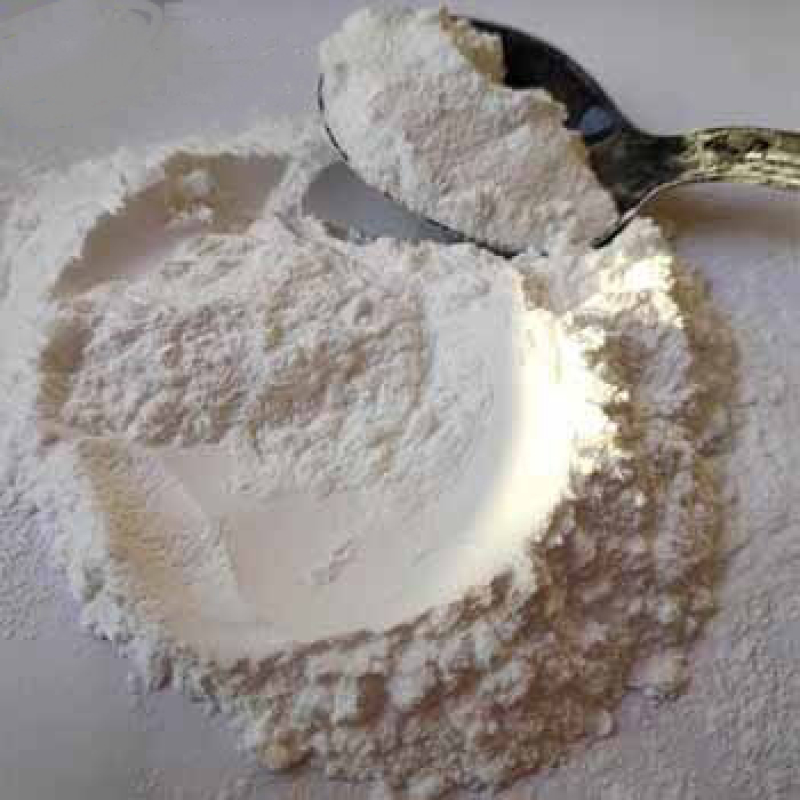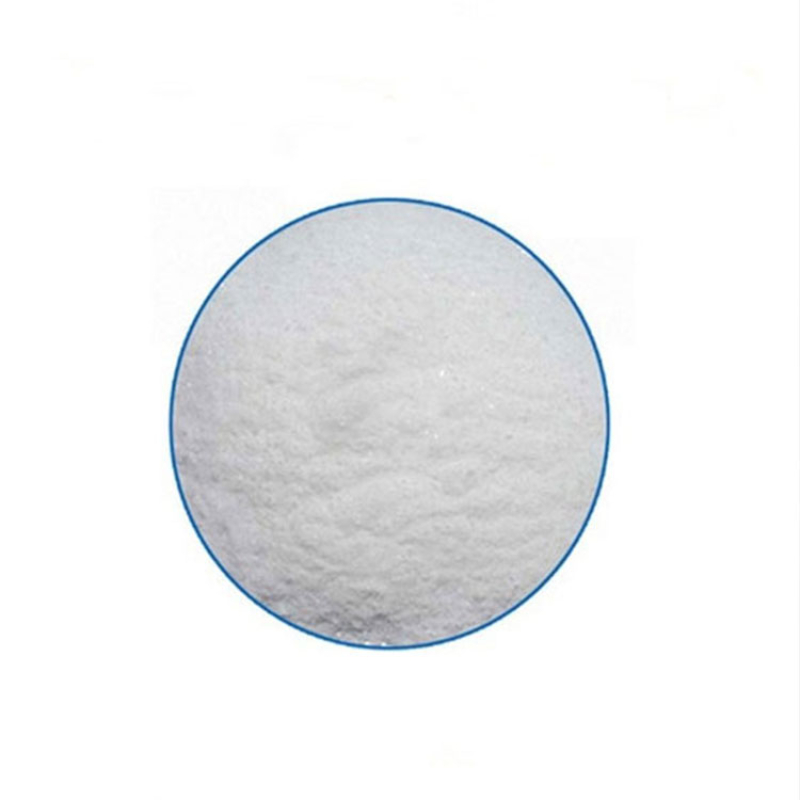Ethyl acetate CAS# 141-78-6Chemical Properties:Ethyl acetate (structure shown above) is the most familiar ester to many chemistry students and possibly the ester with the widest range of uses. Esters are structurally derived from carboxylic acids by replacing the acidic hydrogen by an alkyl or aryl group. Ethyl acetate itself is a colourless liquid at room temperature with a pleasant "fruity" smell, b.p.
Contact Now
Products Description of Magnesium Acetate Tetrahydrate CAS#16674-78-5Colorless crystals, easily deliquescent.
Contact Now
Products Description of Amoxicillin CAS#26787-78-0Amoxicillin, also known as amoxicillin or anmercillin, is one of the most commonly used broad-spectrum β-lactam antibiotics of the penicillin class. It is a white powder with a half-life of about 61.3 minutes. It is stable under acidic conditions, with a gastrointestinal absorption rate of 90%. It has strong bactericidal effects and the ability to penetrate cell membranes. It is also one of the semi-synthetic penicillins that are currently widely used in clinical practice.
Contact Now
Products Description of Monoethanolamine CAS#141-43-52-Hydroxyethylamine, also known as ethanolamine, is an organic compound with the chemical formula C2H7NO.Monoethanolamine Chemical PropertiesMelting point 10-11 °C(lit.)Boiling point 170 °C(lit.)density 1.012 g/mL at 25 °C(lit.)vapor density 2.1 (vs air)vapor pressure 0.2 mm Hg ( 20 °C)refractive index n20/D 1.454(lit.)Fp 200 °Fstorage temp. Store at +15°C to +25°C.solubility Soluble in benzene, ether, carbon tetrachloride.pka9.5(at 25℃)form Liquidcolor
Contact Now
Products Description of Silver acetate CAS#563-63-3Silver acetate is an off-white solid powder at room temperature and pressure. It has average solubility in water. 1L of water can dissolve about 10.2g of silver acetate. It has good solubility in organic solvents such as ethanol, methanol and acetone.
Contact Now
Products Description of Ethyl butylacetylaminopropionate CAS#52304-36-6Mosquito repellent, also known as ethyl butyl acetylaminopropionate, BAAPE, IR3535, and Imonin, is a plasticizer and a broad-spectrum, highly effective, low-toxic insect repellent.Ethyl butylacetylaminopropionate Chemical PropertiesMelting point <-20°Boiling point bp0.2 108-110°; bp0.5 126-127°density 0.987±0.06 g/cm3(Predicted)refractive index nD20 1.452-1.455Fp 318°F (159°C)storage temp. Sealed in dry,Room Temperaturesolubility Acetonitrile (Slightly), Chloroform (Slightly), Ethy
Contact Now
Products Description of Butyl acrylate CAS#141-32-2Butyl acrylate is mainly used to make polymer monomers for fibers, rubbers, and plastics. It is used in the organic industry to make adhesives, emulsifiers, and as an organic synthesis intermediate.It is used in the papermaking industry to make paper reinforcing agents. It is used in the coating industry to make acrylic coatings. Butyl acrylate (butyl acrylate) is the most important variety of acrylic esters.
Contact Now
Products Description of 1-ETHOXY-2-PROPYL ACETATE CAS#54839-24-6Colorless liquid1-ETHOXY-2-PROPYL ACETATE Chemical PropertiesBoiling point 205.8°C (rough estimate)density 0.9410vapor pressure 2.02hPa at 24.85℃refractive index 1.4025solubility Chloroform (Slightly), Methanol (Slightly)form Oilcolor ColorlessWater Solubility 69.6g/L at 18℃LogP0.76 at 22℃EPA Substance Registry System2-Propanol, 1-ethoxy-, acetate (54839-24-6)Safety InformationRisk Statements 10Safety Statements 16RIDADR 1993HazardClass 3.2PackingGroup IIIFactor
Contact Now
Sodium formate CAS#141-53-7The main purpose of sodium formate as follows:Sodium formate can be used as chemical analysis reagent, used for determination of arsenic and phosphorus, also used as a disinfectant, mordant and so on.
Contact Now
Products Description of Hydrogenated castor oil CAS#8001-78-3Castor oil is flammable but not inflammable, almost insoluble but soluble in ethanol, slightly soluble in aliphatic hydrocarbons, and castor oil is slightly volatile, so be careful when storing it.
Contact Now
Products Description of 5-Aminoisoquinoline CAS#1125-60-65-Aminoisoquinoline is an organic compound with the chemical formula C9H8N2.5-Aminoisoquinoline Chemical PropertiesMelting point 125-128 °C (lit.)Boiling point 312.78°C (estimate)density 1.1148 (estimate)refractive index 1.7080 (estimate)storage temp. Keep in dark place,Sealed in dry,Room Temperaturesolubility Chloroform, Ethyl Acetate, Methanolpka5.67±0.13(Predicted)form Crystalline Powdercolor Yellow-brownSensitive Light SensitiveBRN 114465CAS DataBase Reference1125-60-6(CAS D
Contact Now
Products Description of Tris(hydroxymethyl)nitromethane CAS#126-11-4Chemical, crystallizes into white crystals in a mixture of ethyl acetate and benzene.
Contact Now
Products Description of Monoethanolamine CAS#141-43-52-Hydroxyethylamine, also known as ethanolamine, is an organic compound with the chemical formula C2H7NO.Monoethanolamine Chemical PropertiesMelting point 10-11 °C(lit.)Boiling point 170 °C(lit.)density 1.012 g/mL at 25 °C(lit.)vapor density 2.1 (vs air)vapor pressure 0.2 mm Hg ( 20 °C)refractive index n20/D 1.454(lit.)Fp 200 °Fstorage temp. Store at +15°C to +25°C.solubility Soluble in benzene, ether, carbon tetrachloride.pka9.5(at 25℃)form Liquidcolor
Contact Now
CELLULOSE ACETATE BUTYRATE CAS#9004-36-8Cellulose acetate butyrate has a wider solubility range.
Contact Now
Monoethanolamine CAS# 141-43-5Ethanolamine is a variety of viscous hygroscopic amino alcohol incorporates each amine and alcohol chemical groups. It is extensively dispensed interior the physique and is a thing of lecithin. It has many sorts of industrial applications. For example, it can be used in the manufacturing of agricultural chemical compounds such as ammonia as properly as the manufacturing of prescription drugs and detergents. It can additionally be used as a surfactant, fluorimetric reagent and casting off agent of CO2 and H2S.
Contact Now
Products Description of Zirconium acetate CAS#7585-20-8Zirconium acetate (liquid), a colorless transparent liquid, is made by the reaction of zirconium oxychloride and sodium carbonate.
Contact Now
Products Description of Sodium dichloroisocyanurateCAS#2893-78-9White crystalline powder, with a strong chlorine smell, containing 60% to 64.5% effective chlorine. It is stable. When stored in hot and humid areas, the effective chlorine content only drops by about 1%. It is easily soluble in water, with a solubility of 25% (25°C). The solution is weakly acidic, and the pH of its 1% aqueous solution is 5.8 to 6.0. The pH changes little with increasing concentration.
Contact Now
Products Description of Ethyl 2-ethylacetoacetate CAS#607-97-6Used as an intermediate of the drug rebapidEthyl 2-ethylacetoacetate Chemical PropertiesMelting point 170 °C (decomp)Boiling point 87-189 °C/743 mmHg (lit.)density 0.981 g/mL at 25 °C (lit.)refractive index n20/D 1.421(lit.)Fp >230 °Fstorage temp. Keep in dark place,Sealed in dry,Room Temperaturesolubility Chloroform (Slightly), Methanol (Slightly)pka12.02±0.46(Predicted)form Liquidcolor Colorless to pale yellowOdorat 100.00 %.
Contact Now
Products Description of Glycerol formal CAS#4740-78-7Glycerol acetal (GF) is a light glycerol acetal composed of about 60% 5-hydroxy-1,3-dioxane and about 40% 4-hydroxymethyl-1,3-dioxane. Glycerol reacts with formaldehyde in the presence of an acidic catalyst to produce acetone.
Contact Now
Products Description of Cobalt Acetate CAS#71-48-7Cobalt acetate is a purple-red crystal that is easily deliquescent and is soluble in water, acid and ethanol.Cobalt acetate Chemical PropertiesMelting point 298 °C (dec.)(lit.)density 1.7043g/cm3solubility Aqueous Acid (Slightly), Water (Slightly)form Powdercolor Pale pink to purpleWater Solubility Soluble in water, alcohol, dilute acids and pentyl acetate(tetrahydrate).Sensitive HygroscopicMerck 14,2433Stability:HygroscopicInChIKeyQAHREYKOYSIQPH-UHFFFAOYSA-LLogP-0.285 (est)CAS DataBase Referenc
Contact Now
Products Description of DL-Menthol CAS#89-78-1 Menthol is a chemical agent. It is extracted from the leaves and stems of mint. It is a white crystal with a molecular formula of C10H20O. It is the main component of mint and peppermint essential oils. In the world, China and Brazil are the main natural mint producers, and the annual output of mint oil reaches 2000-3000 tons. Menthol and racemic menthol can be used as flavoring agents for toothpaste, perfume, beverages and candies.
Contact Now
Products Description of NICARBAZINE CAS#330-95-0Nicarbazin is a complex of dinitrocarbamide and hydroxydimethylpyrimidine. It is a yellow or yellow-green powder; odorless, with a slight odor. This product is slightly soluble in dimethylformamide, insoluble in water, ethanol, ethyl acetate, chloroform, and ether.
Contact Now
Products Description of BISMUTH SULFIDECAS#1345-07-9Bismuth sulfide is brown-yellow powder or crystal, with a specific gravity of 7.39. It decomposes at 685℃. It is insoluble in water and ethyl acetate, but soluble in nitric acid and hydrochloric acid.BISMUTH SULFIDE Chemical PropertiesMelting point 685°C (dec.)density 7.7 g/mL at 25 °C(lit.)solubility insoluble in H2O; soluble in acid solutionsform LumpSpecific Gravity7.7color GrayWater Solubility Insoluble in water.
Contact Now
Products Description of 2,2'-Azobis(2-methylpropionitrile) CAS#78-67-1White columnar crystals or white powdery crystals.
Contact Now



































